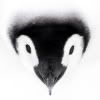Last week, on the morning of Nov. 11, a tremor shook the Port-au-Prince suburb of Carrefour. It was a minor geological event, but given the still fresh and haunting memories of the 7.0-magnitude earthquake that hammered Haiti on Jan. 12 and killed some 230,000 people - many of them in Carrefour - even that mild shudder caused public panic. The only reported injuries, in fact, were due to people scrambling to take cover.
To geologists, it's good to see Haitians on such heightened alert. Most scientists believe the western hemisphere's poorest country is hardly out of the seismic woods - and after studying the Haiti quake data for the past 10 months, they're more convinced than ever that Haitians can expect another major quake sooner rather than later. That's largely because they've found, according to a new study by 10 prominent geologists, that the lion's share of the January temblor occurred not along the fault line they originally suspected, known as the Enriquillo–Plantain Garden fault zone, but on a previously unknown fault. (Faults separate plates in the earth's crust, which cause quakes when stress makes them collide.) As a result, says Falk Amelung, a University of Miami geologist and one of the report's authors, "the prospects of another serious event may be rather worse than we first thought."
When Amelung and other geologists started poring over information from the earthquake's satellite-radar images last January, they were flummoxed by a variety of features. One was the vertical motion the quake exhibited - unusual because the Enriquillo, which runs across Haiti's southern peninsula just below Port-au-Prince, is a strike-slip fault, the kind that almost exclusively displays horizontal motion when it ruptures. At the same time, the quake's horizontal movement was partly north-south, another anomaly for a strike-slip fault. "Those were the two important smoking guns" that made scientists question their early assumptions about the quake, says Eric Calais, a Purdue University geologist who is in Haiti as a science adviser to the U.N. Development Program and is a lead author of the study, which was published last month in Nature Geoscience.(See more about the January earthquake that devastated Haiti.)
There were others. Why, for example, did the earthquake's rupture not reach the surface, despite its strength? And, perhaps most important, why did so little of the Enriquillo fault itself seem to rupture? The answer, say the geologists, is that another, unmapped fault line parallel to the Enriquillo was also involved, one they've now identified and named the LÉogÂne, for the city west of Port-au-Prince where the quake had its epicenter. The LÉogÂne fault, they add, seems to be a combination of a strike-slip and a thrust fault (which helps explain the vertical motion and other unexpected behavior) and was responsible for about 85% or more of the quake's energy.
But even with the important discovery of the LÉogÂne fault, geologists say Haiti is still left with an ominous reality: the larger Enriquillo has yet to fire much if not most of its volatile seismic ammunition. Before January, the fault hadn't had a major rupture since 1751. Scientists have observed that only the western half of the segment that broke in 1751 came apart this time, meaning the eastern portion - closest to Port-au-Prince - is now likely a geological hair trigger. In fact, the discovery of the LÉogÂne fault, as geologists like Amelung suggest, may mean things are more dangerous than previously imagined, since it indicates the Enriquillo spent even less of its own energy in the January earthquake than they had assumed.
Calais, however, thinks the LÉogÂne's appearance "is no reason to be alarmist." In the study, Calais agrees that on Hispaniola, the Caribbean island Haiti shares with the Dominican Republic, "vulnerability to earthquake shaking will probably remain high in the near future." But finding the new fault, he tells TIME, "doesn't mean Port-au-Prince is more or less exposed than it was before. It's still sitting on a [seismic] time bomb that Haiti had unfortunately ignored before Jan. 12, and which we and the Haitians now have to focus on more closely." Geologists like Amelung's Miami colleague, Tim Dixon, began to identify the Enriquillo fault as a major Caribbean quake hazard in the 1980s.
New leaps in satellite and GPS imagery, spearheaded by organizations like the Japanese space agency JAXA and the international Group on Earth Observations, helped make the new fault discovery possible. It's sure to renew discussion about whether Haiti should rebuild away from its overpopulated southern capital, although scientists now fear there may be hidden faults to the north as well. More important, it's another reminder that Haiti has to rebuild smarter - the quake's death toll could have been slashed if the country hadn't allowed so much shoddy concrete construction and poor urban planning - so that when the next big quake does hit places like Carrefour, Haitians can escape horrors like those of January 2010.
Source--
Got Penguins?
Penguin News Today
The Science of Penguins
The Gentoos are back! Come see them on live cam at:
Gentoo Penguins of Gars O'Higgins Station, Antarctica

__._,_.___
No comments:
Post a Comment